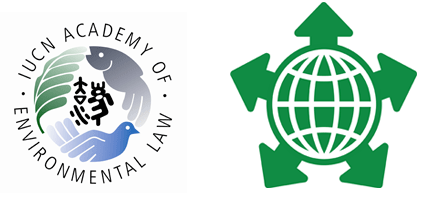Event Title
Sustainable Development and Climate Change: Challenges and Opportunities for International Law
Location
Room 108
Start Date
3-7-2012 2:40 PM
End Date
3-7-2012 4:20 PM
Description
Up to recent years, international legal regime dealt with sustainable development and climate change responses as separate issues. Both the issues are covered under separate legal frameworks of the United Nations’ Agenda 21 and the United Nations Framework Convention on Climate Change (UNFCCC). But these two issues are deeply interrelated. As for example, the capacity to mitigate and adapt to climate change, and the associated mitigation and adaptation costs, depend critically upon the underlying development policies, which in turn significantly influences sustainable development policies and actions. The lack of coherency between developing strategies and climate strategies is intensifying climate vulnerabilities, leading to insufficient climate and development financial commitments, and ultimately putting development in a state of crisis and international climate negotiations at a dead end. So it is high time to recognise the linkage and close relationship between these two issues and address them at policy level. In the same way, ‘adaptation’ and ‘mitigation’ as the response of climate change are dealt as separate strategies for developed and developing countries. It is visible from the policy recommendations of the Kyoto Protocol (1997), the Bali Roadmap (2007) and the Copenhagen Accord (2009). But this separation, in many ways has been proven illogical during implementation of the projects. As for example, coastal rehabilitation with mangroves, hits various facets of mitigation and adaptation together. So the nexus of these two also now needs sorting throw. In this context, the finding of this paper is that unless mitigation, adaptation and development strategies are integrated at international policy level, this will pursue strategies for different nationals that solve one problem but aggravates others. The paper also scrutinises how to make a coherency between developing strategies and climate strategies at policy level and recommends for a ‘climate-development integrated approach’. This is such an approach that ensures climate-compatible development; a development to minimize the harm caused by climate impacts, while maximizing the many human development opportunities by low emissions and more resilient future. Finally, the paper considers possible law and policy alternatives to ensure ‘triple win’ strategies that result in low emissions, build resilience and promote development simultaneously.
Presentation
Included in
Sustainable Development and Climate Change: Challenges and Opportunities for International Law
Room 108
Up to recent years, international legal regime dealt with sustainable development and climate change responses as separate issues. Both the issues are covered under separate legal frameworks of the United Nations’ Agenda 21 and the United Nations Framework Convention on Climate Change (UNFCCC). But these two issues are deeply interrelated. As for example, the capacity to mitigate and adapt to climate change, and the associated mitigation and adaptation costs, depend critically upon the underlying development policies, which in turn significantly influences sustainable development policies and actions. The lack of coherency between developing strategies and climate strategies is intensifying climate vulnerabilities, leading to insufficient climate and development financial commitments, and ultimately putting development in a state of crisis and international climate negotiations at a dead end. So it is high time to recognise the linkage and close relationship between these two issues and address them at policy level. In the same way, ‘adaptation’ and ‘mitigation’ as the response of climate change are dealt as separate strategies for developed and developing countries. It is visible from the policy recommendations of the Kyoto Protocol (1997), the Bali Roadmap (2007) and the Copenhagen Accord (2009). But this separation, in many ways has been proven illogical during implementation of the projects. As for example, coastal rehabilitation with mangroves, hits various facets of mitigation and adaptation together. So the nexus of these two also now needs sorting throw. In this context, the finding of this paper is that unless mitigation, adaptation and development strategies are integrated at international policy level, this will pursue strategies for different nationals that solve one problem but aggravates others. The paper also scrutinises how to make a coherency between developing strategies and climate strategies at policy level and recommends for a ‘climate-development integrated approach’. This is such an approach that ensures climate-compatible development; a development to minimize the harm caused by climate impacts, while maximizing the many human development opportunities by low emissions and more resilient future. Finally, the paper considers possible law and policy alternatives to ensure ‘triple win’ strategies that result in low emissions, build resilience and promote development simultaneously.

